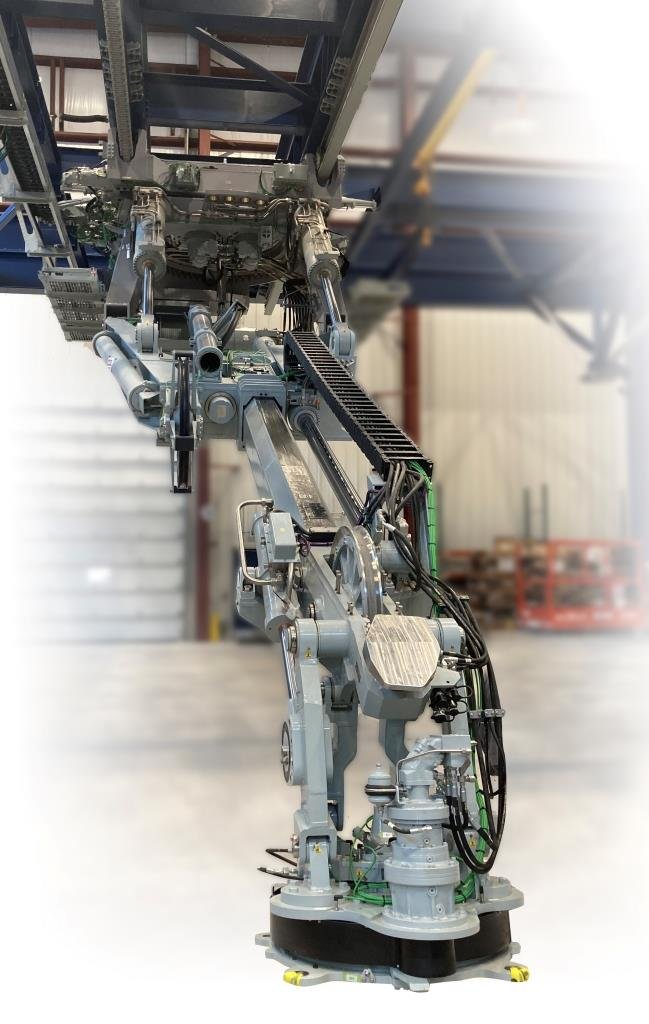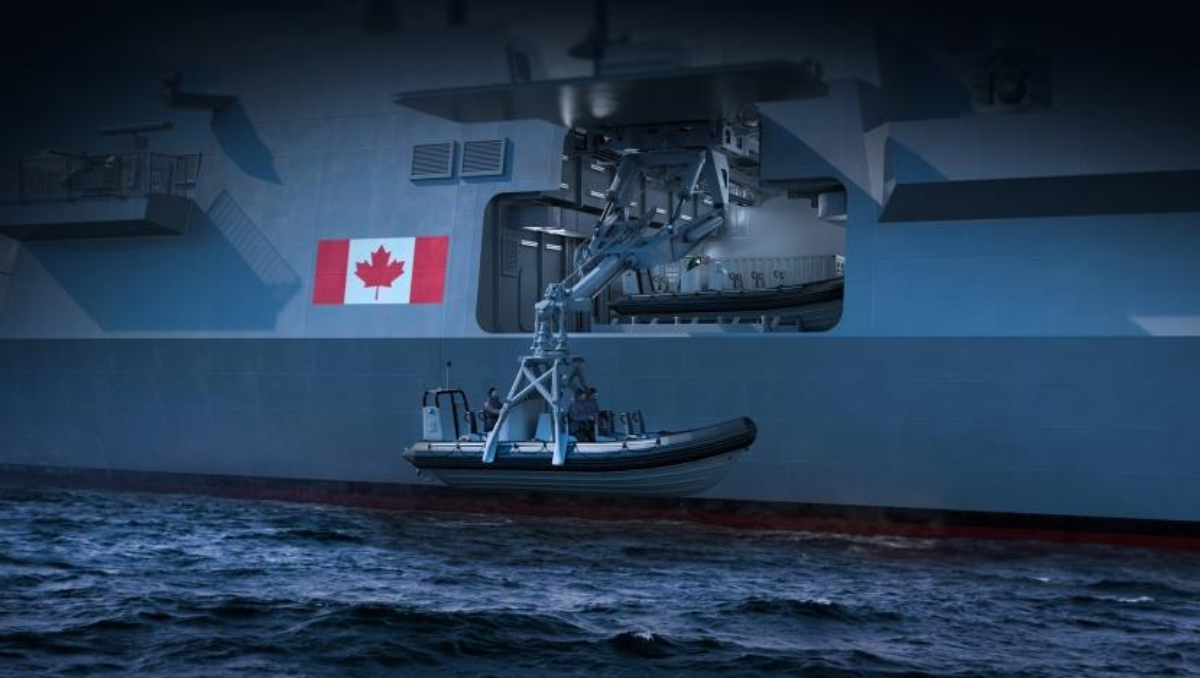INDUSTRY FOCUS - Rolls-Royce
BY GABRIEL OAKLEY
Ready to Power Future Forces
For over 100 years, Rolls-Royce has held strong with its iconic tradition of ingenuity, developing and delivering complex power and propulsion solutions for applications in the air, at sea and on land. Today, with a renewed and intensified focus on performance and efficiency, combined with a world-class engineering pedigree, Rolls-Royce continues to enhance and evolve its strong portfolio of capabilities to meet the growing need for power generation for customers in more than 150 countries. This includes focussing on transforming the future for its customers and using technology as a force for good by innovating advanced and sustainable power solutions.
75 YEARS IN CANADA
For over 75 years, the company has retained its presence in Canada, delivering critical power systems and technology for civil and defence aviation and naval marine markets. “Today we have around 1,000 employees based in our Canadian facilities and Canada remains an important market for us,” said Bruce Lennie, Vice President of Business Development and Government Affairs at Rolls-Royce. “Our involvement in a variety of aviation and naval programs means we have continued to maintain and strengthen our presence and long-term investment in Canada, providing strong opportunities for the Canadian supply chain as well as delivering advanced technology benefits to the Canadian economy and Canada’s Armed Forces,” he told CDR.
From a Defence perspective, Rolls-Royce has a remarkable pedigree with more than 16,000 engines currently in service and serving over 160 defence forces worldwide with military solutions for land, sea and air. Its naval power and propulsion capability alone stretches back to 1938 when the iconic Merlin engine was first installed in the British Coastal Patrol Boats. The company went on to pioneer one of the most significant advances in surface ship propulsion; the world’s first marine gas turbine derived from aero technology. From then onwards, that pioneering spirit has seen Rolls-Royce develop some of the most efficient and advanced gas turbines for naval ships around the world. 
“Today, our naval capability actually extends beyond gas turbines, and the portfolio we offer our naval military customers includes propellers, waterjets, deck handling systems and system integration expertise and, from our Power Systems business, the renowned range of mtudiesel engines/generators as well as low voltage electrical systems, IPMS, Automation and Control,” said Lennie.
MBHS – CANADIAN INNOVATION
The Rolls-Royce offering for the Canadian Surface Combatant (CSC) includes the innovative Mission Bay Handling System (MBHS). This system will provide the ship with true multi-mission operational benefits, an important requirement for the ships being built for tomorrow. The MBHS will enable the CSC to transform its mission bay into a multi-purpose, flexible space allowing it to adapt to a variety of needs. It offers countless possibilities for ship operators - from storage of all types of cargo, containerised mission modules, to hydraulic robotic arms that will efficiently and safely deploy and retrieve manned/unmanned surface vessels as well as temporary housing for humanitarian missions.
“Work is well underway at the company’s Naval Handling facility in Peterborough, Ontario where the system is designed, assembled and tested,” Lennie told CDR. “The first system for the UK’s Global Combat Ship variant will be delivered to the UK in early 2024. The initial system is now fully assembled and operational. In the coming months we will be focusing on software integration as we look to complete factory testing and design validation later this year.”
“With the MBHS being provided to Canada’s CSC program, the UK’s Type 26 program and the Australian Hunter-class anti-submarine warship program, the export potential has resulted in the expansion of our Peterborough facilities, creating significant economic benefits for the domestic Canadian supply chain and the wider economy.”
POWERING CSC
Other Rolls-Royce equipment being offered into the Canadian Surface Combatant program includes the MT30 Marine Gas Turbine, the power at the heart of the Global Combat Ship design. “MT30 has been at sea in active operation since 2008 and is in service or been selected for eleven modern warship programs, spanning seven navies to date,” said Lennie. “Due to its sheer power density, it also contributes to the future-proof capability of the ship, ensuring power requirements for future technology upgrades to ship systems can be met. Another unique feature of the MT30 is that it can deliver its full power of 36MW-40MW in ambient temperatures up to 38°C with no degradation throughout the ship’s life, which makes it attractive for owners in terms of through-life costs and ultra-low maintenance requirements.”
“The CSC itself will feature a combined diesel-electric or gas-turbine propulsion configuration (CODLOG), comprising four mtu 20V 4000 M53B diesel gensets supplied by our Power Systems division with a single Rolls-Royce MT30 gas turbine,” explained Lennie. “The diesels will provide power for on-board systems and cruise propulsion mode, while the gas turbine is utilised for high speeds.”
Lennie added, “There is also an opportunity for our Peterborough facility to provide the Variable Depth Sonar Handling System for the Canadian Surface Combatant. This handling system will allow launch, recovery and stowage of Ultra Electronics Canada’s Towed Low Frequency Active Sonar (TLFAS), which will be used in the detection and tracking of stealthy submarines in challenging ocean environments. The lightweight automated handling system requires minimal manning and is capable of launching and recovering the sonar in high sea states.”
STTC & CMMA
Rolls-Royce is also engaged in a number of other important Canadian Defence programs including the Strategic Tanker and Transport Capability (STTC) initiative for the Royal Canadian Air Force. The Airbus A330 MRTT aircraft is the only contending aircraft which was pre-qualified by the Canadian Government. “Rolls-Royce Trent 700 engines power the Airbus A330 MRTT and we are working closely with the Canadian Government and Industry partners on the Interim and Longer-Term In-Service Support (ISS) elements of this critical program,” Lennie told CDR.
“Also, with the Royal Canadian Air Force, we are keeping a close eye on the evolving Canadian Multi-Mission Aircraft (CMMA) program which is the major initiative to replace the CP-140 Aurora aircraft fleet. In addition, Rolls-Royce has developed some unique tactical power systems for the British Army in the UK and we are assessing the applicability of these solutions for the requirements of the Canadian Army.”
INNOVATING FOR THE FUTURE .jpg)
“As our advanced aero engine portfolio emerges for next generation air vehicles, we will continue to draw on that technology and apply it to future marine gas turbine solutions,” said Lennie. “We see these solutions delivering unprecedented fuel efficiency, lower emissions, along with transformational digital capabilities we are developing that will equip our naval customers with decision superiority. In the case of MT30, it already has Engine Health Management (EHM) capability. This enables the collection of reliable data and analysis to further maximise asset availability and optimise on-board maintenance. EHM delivers additional long-term cost benefits supporting manpower reductions and lower maintenance costs.”
“MT30 customers are also benefitting from our new MT30 Virtual Reality (VR) immersive training capability designed to simulate operator maintenance and service training across the complete engine within a generic compact package and its supporting ancillaries,” added Lennie. “And it’s not just our customers benefitting from MT30 VR. Our own engineers will use the capability to visualise concept changes and evaluate solutions for maintainability, investigate any in-service issues and develop mitigation options, all without access to the actual hardware itself. Augmented Reality (AR) is another technology we can utilise to create a future which provides much greater data insight into customer operations with significant advances to onboard inspections and maintenance, vastly improving efficiency of operations at sea. We see the combination of Augmented and Virtual Reality technology completely transforming the way we work with physical objects in the future.”
SUSTAINABLE SOLUTIONS
Rolls-Royce continues to pursue plans to minimise its environmental impact and support the world’s energy transition to a low carbon global economy.
“Our customers are seeking to decarbonise their operations and looking for solutions that will deliver zero-carbon emissions,” Lennie told CDR. “An energy transition is already underway at Rolls-Royce, as we aim to make our in production commercial aero engines and most popular diesel engines to be 100% compatible with sustainable fuels by the end of 2023, and our new products to be compatible with net zero operation by 2030. This includes the development of new technologies, such as all-electric and hydrogen powered propulsion, the accelerated take-up of sustainable fuels and system level step-change improvements in efficiency.”
“Across Rolls-Royce as a whole, we are already championing sustainable power – developing and testing innovative technologies and systems with our partners, to create power and energy systems needed to deliver clean, safe and resilient power,” said Lennie. “We have built a microgrid business and designed a small modular reactor (SMR) power plant with the potential to transform how we power cities or industrial processes. Even our own facilities will achieve net zero targets. Rolls-Royce’s production site and Defence headquarters in Bristol, UK, is set to be our first facility to achieve net zero carbon status imminently and we are actively implementing our green agenda across other sites,” he told CDR.
“However, becoming more electric is another key element of our journey in helping customers decarbonise and build resilience into their operations, enabling a new era of electric and hybrid-electric systems for aerospace applications. From all-electric aviation for future trainers, UAVs and small military transport, to hybrid solutions for larger aircraft that will intelligently combine efficient gas turbines with power-dense electrical generation, storage and propulsion systems. For large Combat aircraft of the future, where power density is paramount, we are shifting towards more electric architectures including programs such as Tempest.” Lennie added, “Naval customers already benefit from our decades of experience in providing hybrid and full electric power and propulsion systems at sea. As the demand for electrification increases for future complex warships, we are well versed in the critical success factors essential to achieving a right-first-time outcome for these advanced platforms.” .jpg)
“Sustainability is now how we think when we design our future products, ensuring we create power that will be resilient to different types of climate change,” said Lennie. “We’re accelerating our Digital First approach to support our sustainability and resilience ambitions. As we design the systems for tomorrow, we are already minimising the carbon footprint of our products before anything flies by adopting a digital first approach to engineering. We’re making sure that our design processes are net zero through life, avoiding unnecessary carbon contribution to the environment.”
“We’re incredibly proud of our long-standing relationship with the Canadian Armed Forces, Government and defence industry in Canada that has spanned many decades,” Lennie summed up. “We have significant involvement in many of Canada’s largest defence programs and, I believe, through Rolls-Royce innovation and our pioneering spirit, we will continue to offer Canada a valuable partnership in developing the critical solutions needed to protect our sovereign territory and capabilities.”
Gabriel Oakley is a Regular CDR Contributor


